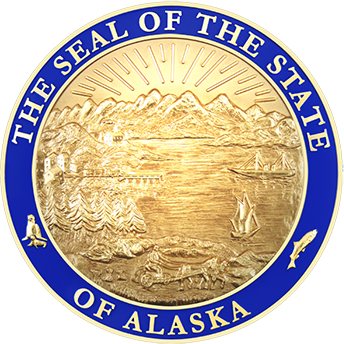About Debt Management
The Debt Management Section, together with the State Bond Committee, has responsibility for issuing State debt and lease/purchase financings for the State of Alaska. State debt includes general obligation bonds and revenue anticipation notes, and State-supported debt includes lease-purchase financings and revenue bonds. The State also provides guarantees and other support for certain debt and operates a school debt and capital project debt reimbursement program. These programs do not constitute indebtedness of the State but do provide, annually on a subject-to-appropriation basis, financial support for general obligation bonds of State agencies and political subdivisions.
Outstanding State Debt
State debt includes general obligation bonds and revenue anticipation notes. The State Constitution provides that general obligation bonds must be authorized by law and be ratified by the voters and permits authorization of general obligation bonds only for capital improvements. The amount and timing of a bond sale must be approved by the State Bond Committee. For both general obligation bonds and revenue anticipation notes, the full faith, credit and resources of the State are pledged to the payment of principal and interest. If future State revenues are insufficient to make the required principal and interest payments, the State is legally required to raise taxes to provide sufficient funds for this purpose. For more information on Outstanding State Debt, see Publications page: Alaska Public Debt.
State Guaranteed Debt
The only purpose for which State guaranteed debt may be issued is for payment of principal and interest on revenue bonds issued for the Veterans Mortgage Program by the Alaska Housing Finance Corporation for the purpose of purchasing mortgage loans made for residences of qualifying veterans. These bonds are general obligation bonds of the State, and they must be authorized by law, ratified by the voters and approved by the State Bond Committee. These bonds are known as 'double-barrel bonds' because there are two distinct forms of security behind the bonds. The principal source of payment is the revenue stream generated by payments on the mortgage loans made from bond proceeds. Additional security to bondholders is provided by the general obligation pledge of the State to make the required debt service payments in the event that pledged revenues from mortgage repayments are insufficient. For more information on Outstanding State Debt, see Publications page: Alaska Public Debt.
State Supported Debt
State supported debt is debt for which the ultimate source of payment is, or may include, appropriations from the General Fund. The State does not pledge its full faith and credit to State-supported debt, but another public issuer may have pledged its full faith and credit to it. State supported debt is not considered 'debt' under the Constitution, because the State's payments on this debt are subject to annual appropriation by the Legislature. Voter approval of such debt is not required. State supported debt includes lease-purchase financing obligations (including lease revenue capital lease bonds and certificates of participation issued by lessors of facilities used by the State) and the share of municipal general obligation bonds issued for school construction and other capital projects that is reimbursable by the State on a subject to appropriation basis. For more information on State Supported Debt, see Publications page: Alaska Public Debt.
State Moral Obligation Debt
State moral obligation debt consists of bonds issued by certain State agencies or authorities that are secured, in part, by a debt service reserve fund benefited by a discretionary replenishment provision that permits, but does not legally obligate, the Legislature to appropriate to the particular State agency or authority the amount necessary to replenish the debt service reserve fund up to its funding requirement (generally the maximum amount of debt service required in any year). State moral obligation debt is payable in the first instance by revenues generated from loan repayments or by the respective projects financed from bond proceeds.
Among those State agencies that have the ability to issue State moral obligation debt are:
- Alaska Aerospace Development Corporation (AADC) which has not issued any debt
- Alaska Energy Authority (AEA)
- Alaska Housing Finance Corporation (AHFC)
- Alaska Industrial Development and Export Authority (AIDEA)
- Alaska Municipal Bond Bank Authority (AMBBA)
- and Alaska Student Loan Corporation (ASLC)
Summary of Outstanding Debt
The Alaska Public Debt link below will list the outstanding State-related debt as of the most recent publication date. Other categories of debt have not been compiled beyond the most recent fiscal year. See Current Financings tab for current State of Alaska related debt activity. For more information, see Publications page: Alaska Public Debt
